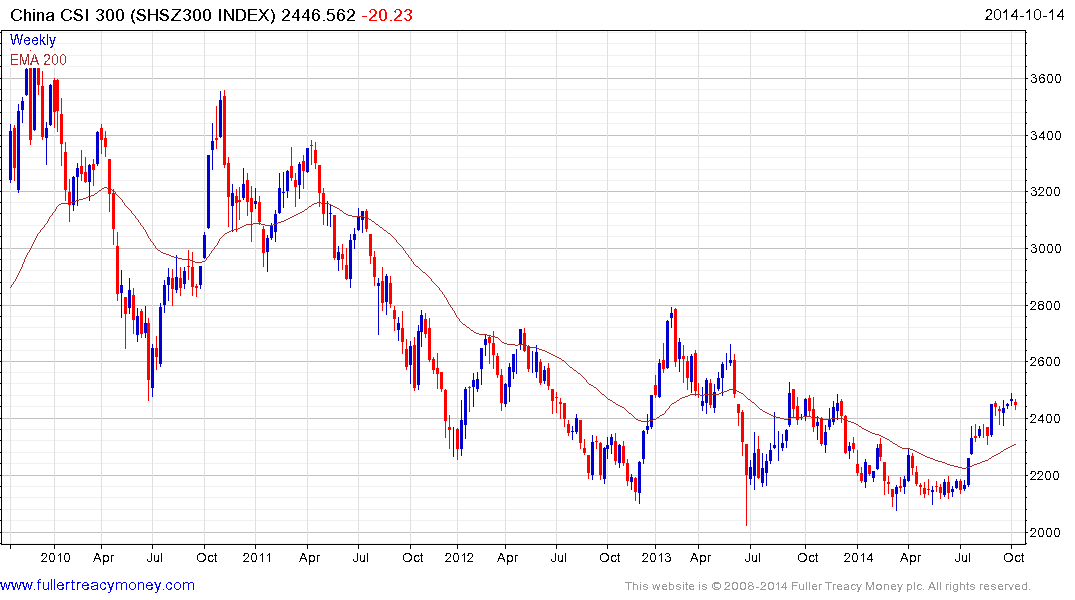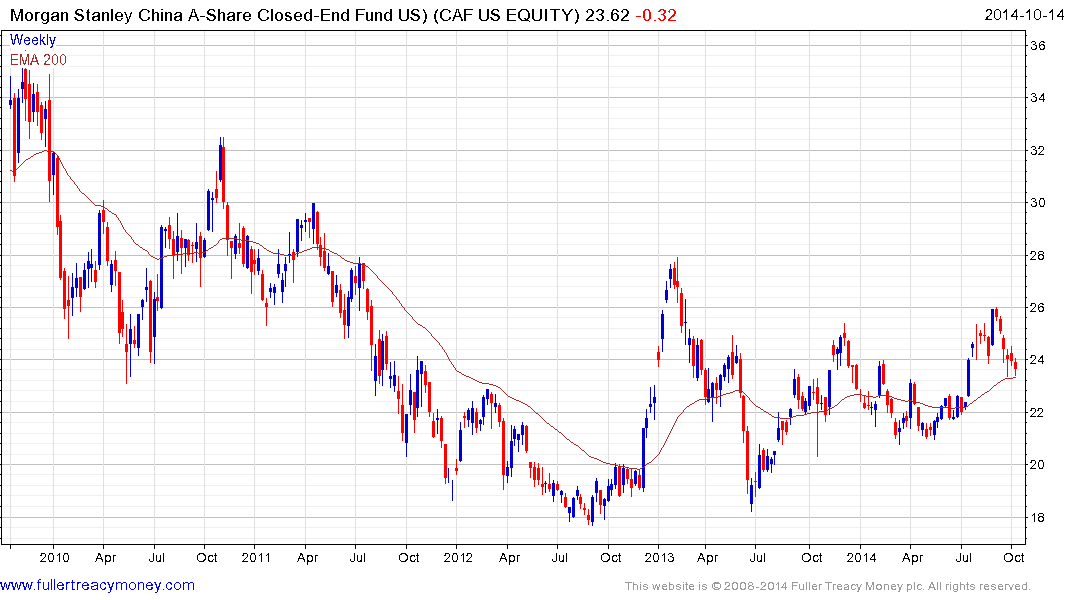Rationing of China ETFs Hits U.S. Market as Demand Soars
This article by Boris Korby for Bloomberg may be of interest to subscribers. Here is a section:
Surging demand has been fueled in part by the biggest quarterly gain for mainland stocks since 2009. The Shanghai Composite gauge rallied 15 percent in the three months through Sept. 30, even as the MSCI Emerging Markets Index fell 4.3 percent. The Shanghai gauge slid 0.4 percent today while the X-trackers Harvest CSI 300 China A-Shares ETF climbed 0.5 percent to $25.77 at 3:05 p.m. in New York.
To deal with the influx of new money, Frankfurt-based Deutsche Asset & Wealth Management said Sept. 11 that the ETF would accept just one creation unit per day. A unit represents 50,000 shares or about $1.3 million at current valuation. The fund provider is increasing the cap to 10 creation units per day, according to a statement today.
“We wanted to maintain a valve of liquidity, increasing the fund size but doing so in a measured way, in anticipation of getting a higher quota,” Kittsley said.
A Qualified Foreign Institutional Investor license, known as a QFII, or Renminbi Qualified Foreign Institutional Investor license, known as an RQFII, is needed for foreign asset managers to buy A-shares. Once the license is obtained, the investor also needs to submit an application to China’s State Administration of Foreign Exchange for a specific dollar amount of investment quota that they can use to buy mainland stocks.
The opening up of the Shanghai – Hong Kong Connect is a major event. For the first time foreign investors will have relatively open access to the mainland stock market via Hong Kong and mainland investors will have access to companies listed in Hong Kong. This represents the opening up of a conduit for capital flows which will reach hundreds of billions over the coming years and the potential acceptance of mainland Chinese securities into the MSCI Emerging Markets indices sometime next year.
Understandably, investors are looking to position themselves early. An addition point in favour of China’s market at the present time is that it is still relatively closed and has not benefitted from liquidity flows over the last three years. Therefore it is less likely to be influenced by any deleveraging that may occur in the short term as a result of increased volatility on Wall Street.

The CSI 300 has been ranging above the 200-day MA for the last month and a sustained move below the trend mean would be required to question medium-term scope for continued upside.
![]()
Both the US and UK listings of the Deutsche X-Trackers Harvest CSI 300 China A-Shares Fund can be found in the Chart Library.

The US Morgan Stanley A Share Fund is still trading at a discount to NAV of almost 8% and has a similar trajectory to the CSI 300.


